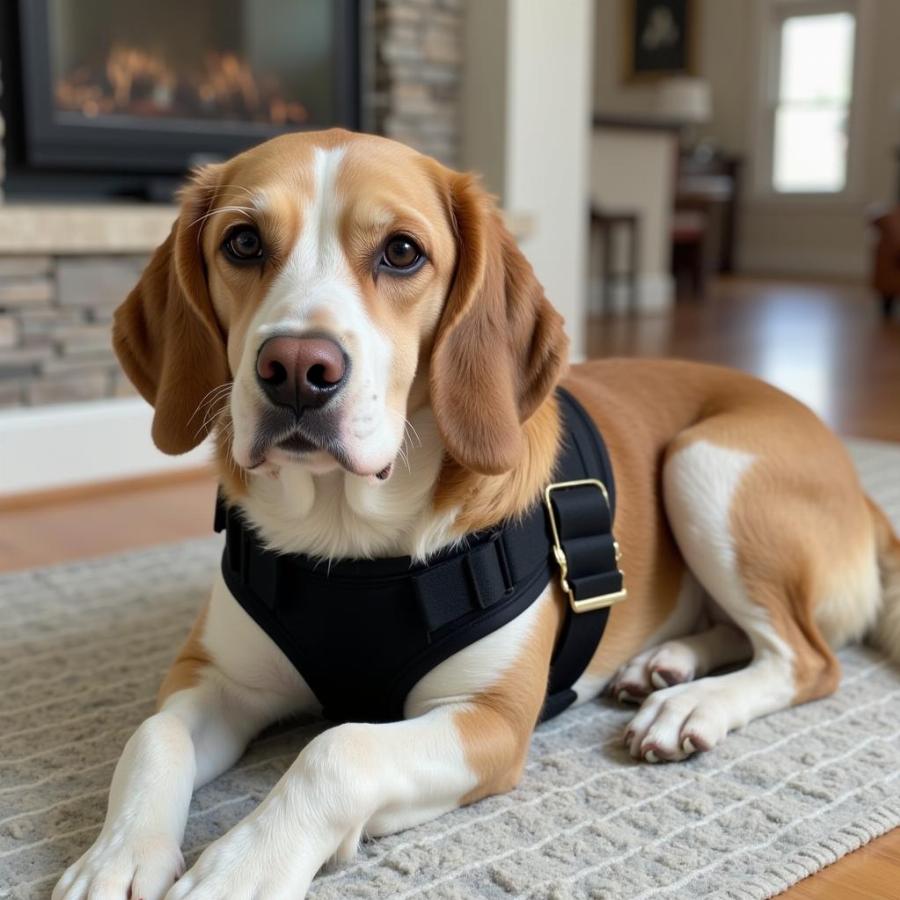TTA surgery in dogs, or Tibial Tuberosity Advancement, is a surgical procedure designed to stabilize the knee joint (stifle) after a rupture of the cranial cruciate ligament (CCL), a common injury in dogs, especially larger breeds. This article will delve into the details of TTA surgery, helping owners understand the procedure, recovery process, and potential benefits and risks.
What is TTA Surgery for Dogs?
TTA surgery is a relatively newer technique compared to other CCL repair options. It focuses on changing the biomechanics of the knee joint rather than directly replacing the ruptured ligament. The procedure involves advancing the tibial tuberosity, the bony prominence on the front of the tibia (shinbone), which alters the forces acting on the knee and eliminates the need for the CCL. This allows the dog to regain normal knee function and stability.
Why Choose TTA Surgery?
Many veterinarians recommend TTA surgery for dogs with CCL ruptures because it offers several advantages. It’s considered a less invasive procedure than some other options, leading to a potentially faster recovery. TTA surgery also has a high success rate in restoring stability to the knee, allowing dogs to return to normal activity levels. It is particularly well-suited for active and athletic dogs.
TTA Surgery Recovery and Post-Operative Care
The recovery period following TTA surgery is crucial for a successful outcome. Post-operative care typically involves strict rest for several weeks, followed by a gradual increase in activity. Physical therapy plays a vital role in rehabilitation, helping to rebuild muscle strength and improve range of motion. Pain management is also essential during the recovery phase. Most dogs can return to normal activity levels within a few months, but complete healing can take up to six months or longer.
 Dog Post TTA Surgery Recovery
Dog Post TTA Surgery Recovery
Risks and Complications of TTA Surgery
While TTA surgery is generally safe and effective, like any surgical procedure, it carries potential risks and complications. These can include infection, implant failure, and tibial fracture. It’s crucial to discuss these potential risks with your veterinarian to make an informed decision about the best treatment option for your dog.
TTA Surgery vs. Other CCL Repair Options
Several surgical options are available for repairing a ruptured CCL in dogs. These include TPLO (Tibial Plateau Leveling Osteotomy) and extracapsular repair. Each technique has its pros and cons, and the best option will depend on the individual dog’s size, breed, activity level, and overall health. Consulting with a veterinarian experienced in orthopedic surgery is essential to determine the most appropriate procedure.
Is TTA Surgery Right for My Dog?
If your dog has ruptured its CCL, you might be wondering if TTA surgery is the right choice. Factors to consider include your dog’s age, size, activity level, and overall health. Your veterinarian can assess your dog’s condition and recommend the most suitable treatment plan. dog tta surgery can be a life-changing procedure for dogs, restoring their mobility and improving their quality of life.
FAQ
-
How long does TTA surgery take? The procedure typically takes about 1-2 hours.
-
How much does TTA surgery cost? The cost can vary depending on location and veterinarian, but it’s generally a significant investment.
-
What is the success rate of TTA surgery? TTA surgery boasts a high success rate, with most dogs regaining good knee function.
-
What are the long-term effects of TTA surgery? Most dogs return to normal activity levels after TTA surgery and have a good long-term prognosis.
-
What are the alternatives to TTA surgery? Alternatives include TPLO surgery, extracapsular repair, and conservative management (rest and physical therapy). tta surgery for dogs is a popular choice among dog owners and veterinarians.
-
When can my dog walk after TTA surgery? Strict rest is required for several weeks post-surgery, followed by a gradual return to activity.
-
What type of harness is best after TTA surgery? A supportive harness can help during recovery, and a 3 legged dog harness may be beneficial during the initial stages of healing. A dog collar cushion or soft dog collars can help prevent irritation around the neck area.
Conclusion
TTA surgery is a viable option for treating CCL ruptures in dogs, offering several advantages over traditional methods. Understanding the procedure, recovery process, and potential risks is crucial for making informed decisions about your dog’s health. By working closely with your veterinarian and following post-operative care instructions, you can help your furry friend regain mobility and enjoy a happy and active life.
Beaut Dogs is your trusted source for comprehensive and reliable information about dog breeds, care, and well-being. For personalized guidance on TTA surgery and other dog health concerns, contact us at Email: [email protected]. Beaut Dogs is committed to helping you provide the best possible care for your beloved canine companion. Visit us at https://beautdogs.com.